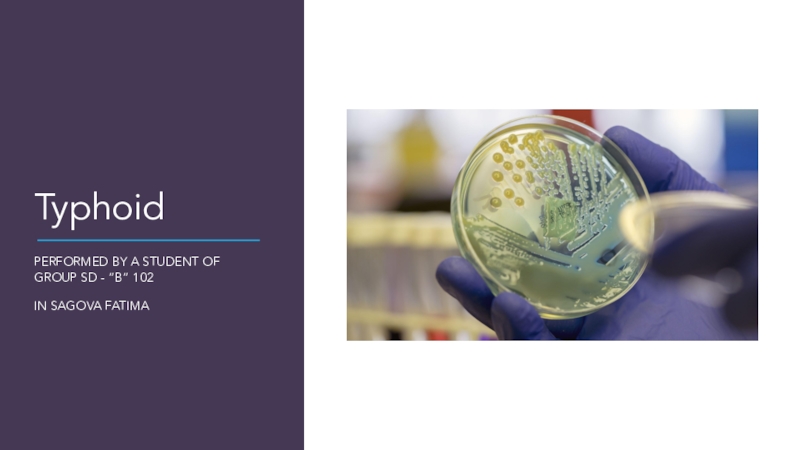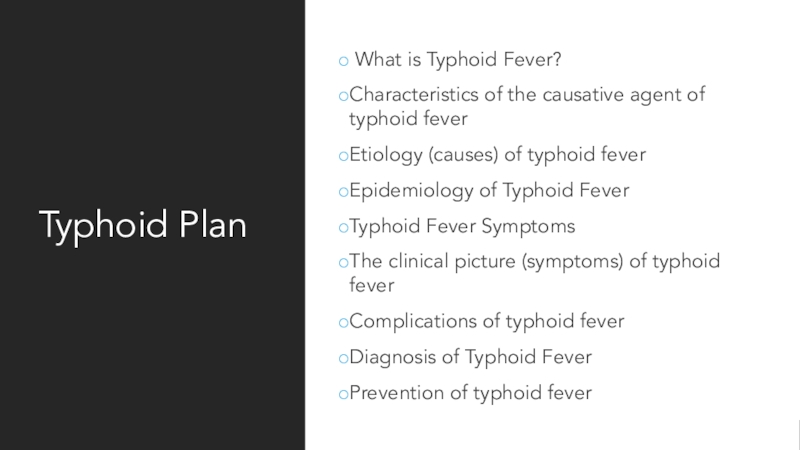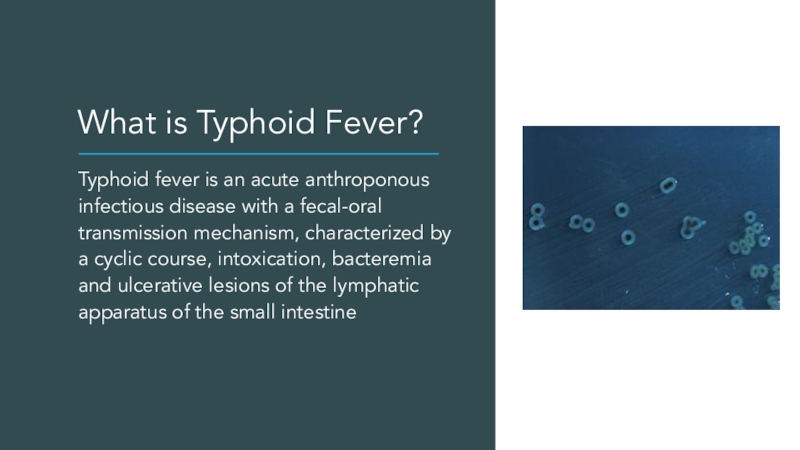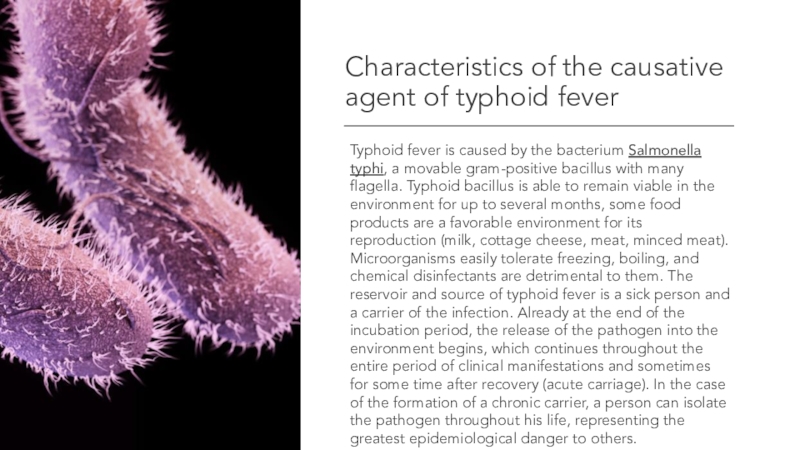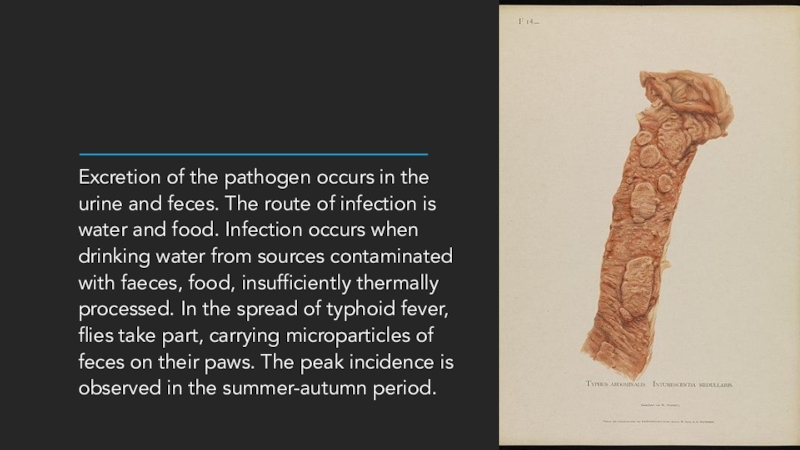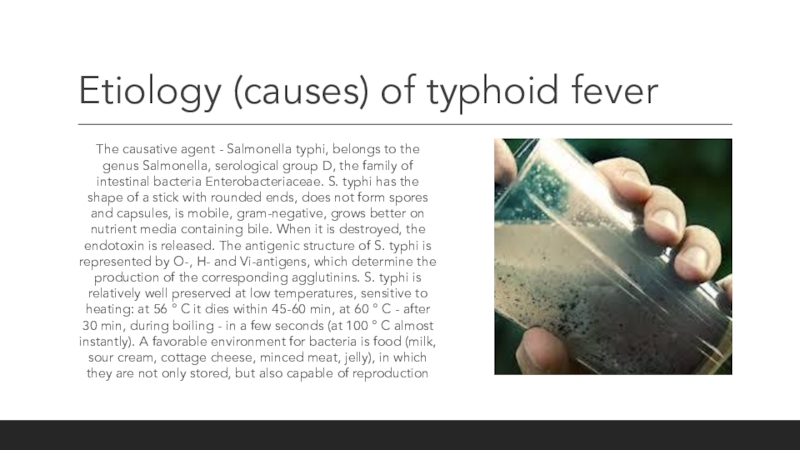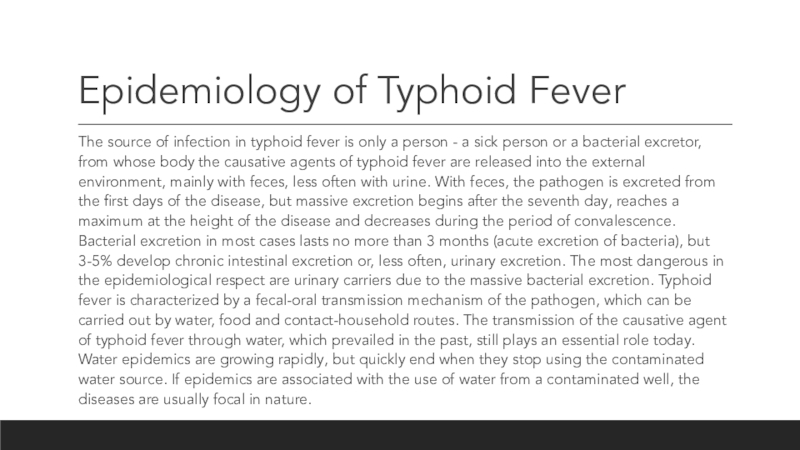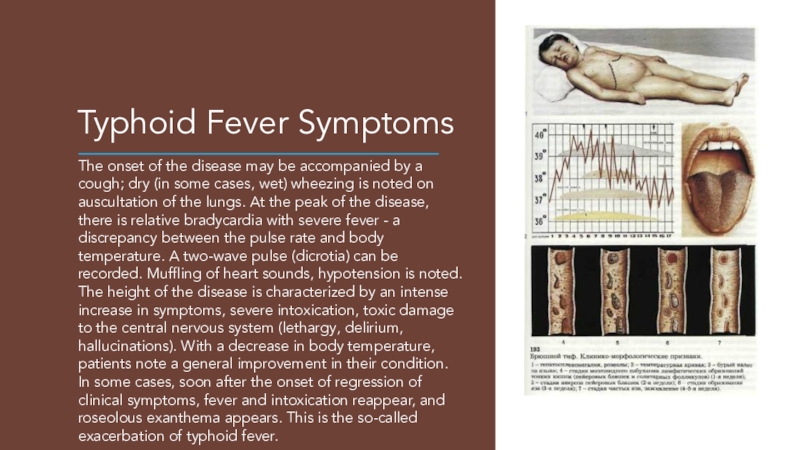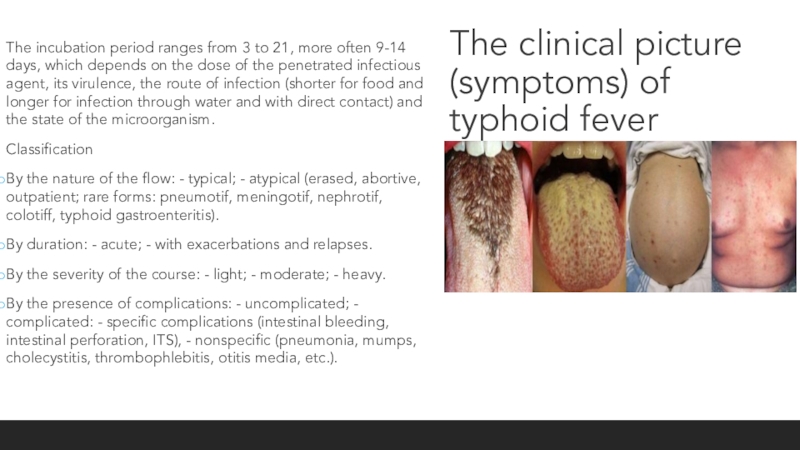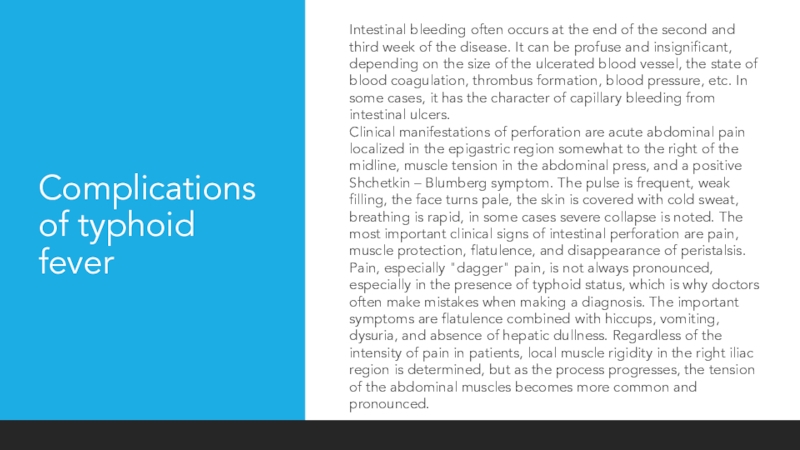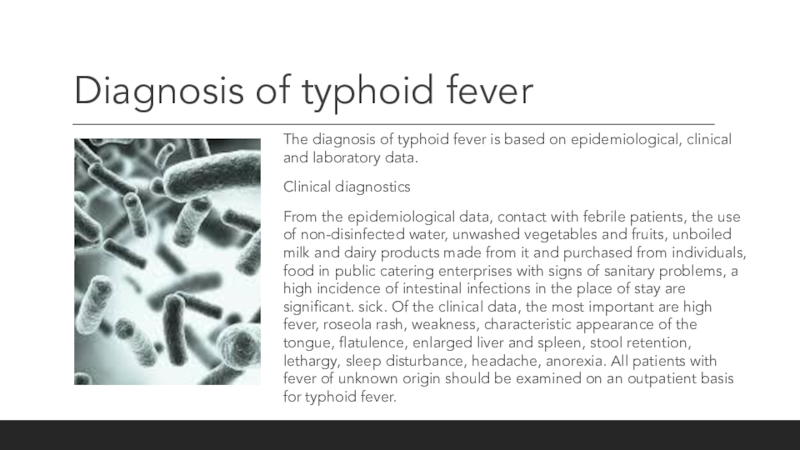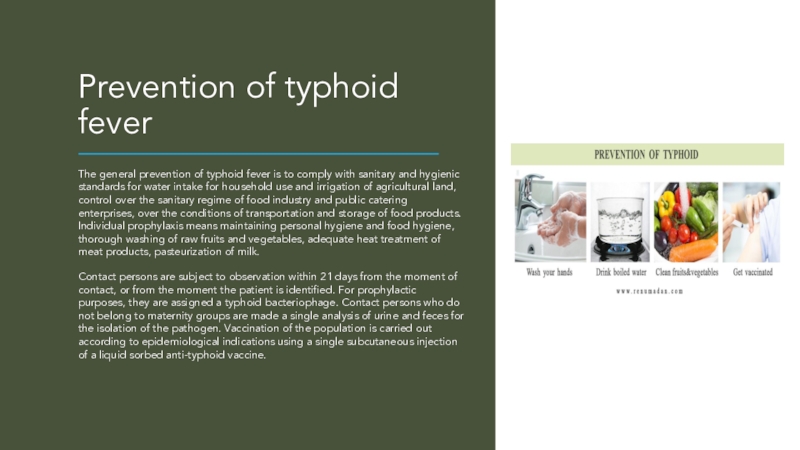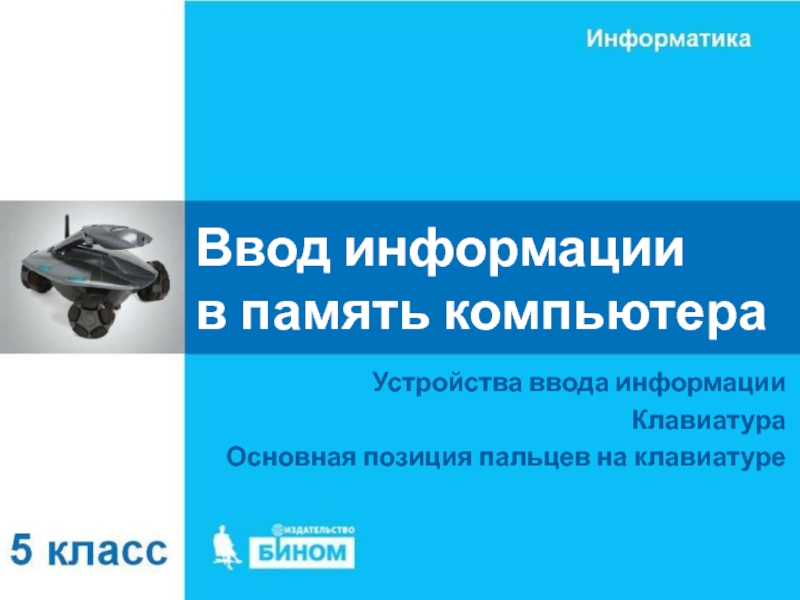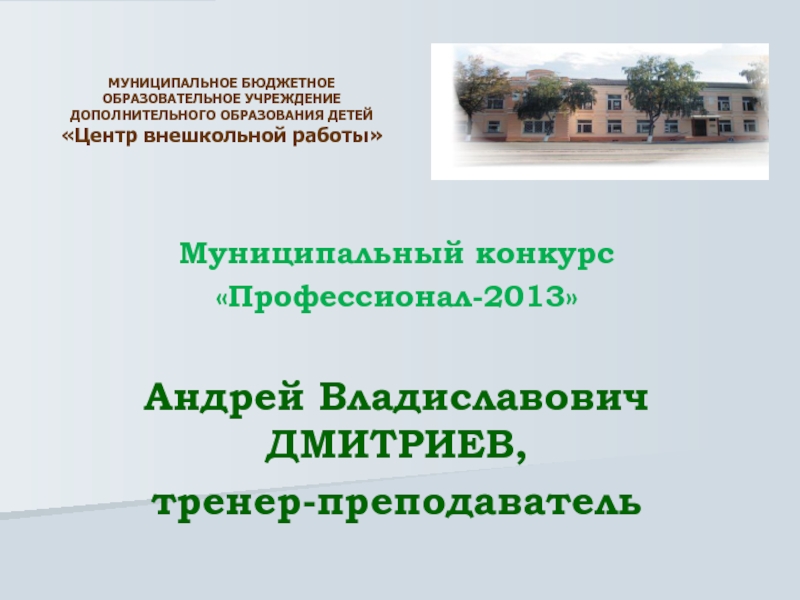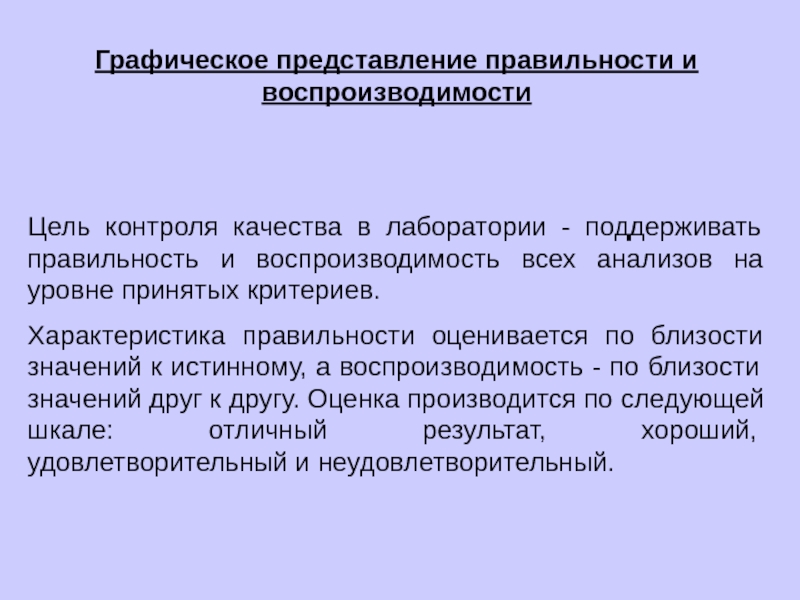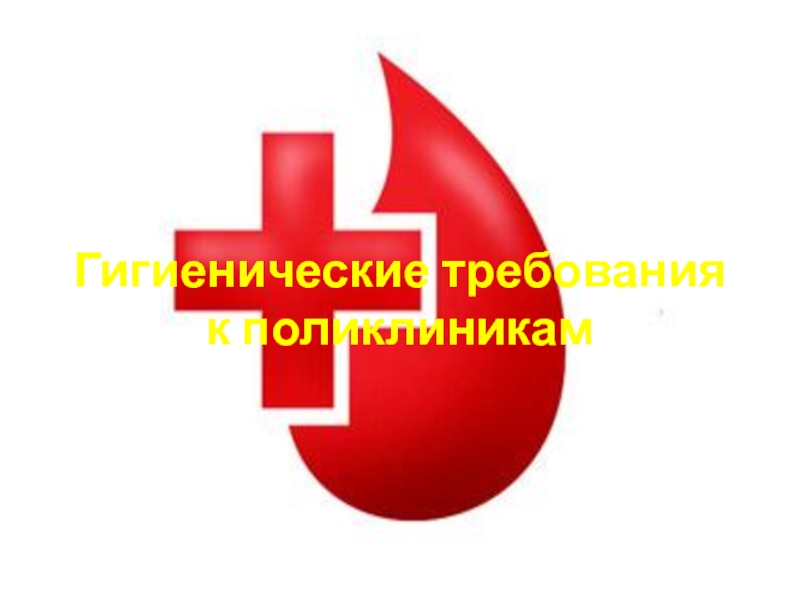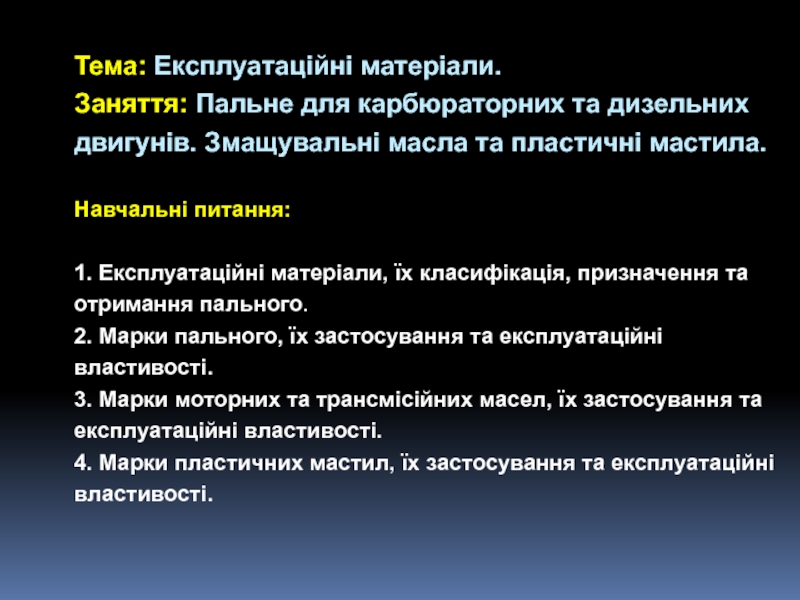Разделы презентаций
- Разное
- Английский язык
- Астрономия
- Алгебра
- Биология
- География
- Геометрия
- Детские презентации
- Информатика
- История
- Литература
- Математика
- Медицина
- Менеджмент
- Музыка
- МХК
- Немецкий язык
- ОБЖ
- Обществознание
- Окружающий мир
- Педагогика
- Русский язык
- Технология
- Физика
- Философия
- Химия
- Шаблоны, картинки для презентаций
- Экология
- Экономика
- Юриспруденция
Typhoid
Содержание
- 1. Typhoid
- 2. Typhoid Plan What is Typhoid Fever? Characteristics
- 3. What is Typhoid Fever?Typhoid fever is an
- 4. Characteristics of the causative agent of typhoid
- 5. Excretion of the pathogen occurs in the
- 6. Etiology (causes) of typhoid feverThe causative agent
- 7. Epidemiology of Typhoid FeverThe source of infection
- 8. Typhoid Fever SymptomsThe onset of the disease
- 9. The clinical picture (symptoms) of typhoid feverThe
- 10. Complications of typhoid feverIntestinal bleeding often occurs
- 11. Diagnosis of typhoid feverThe diagnosis of typhoid
- 12. Prevention of typhoid feverThe general prevention of
- 13. The end Thanks for attention
- 14. Скачать презентанцию
Typhoid Plan What is Typhoid Fever? Characteristics of the causative agent of typhoid feverEtiology (causes) of typhoid feverEpidemiology of Typhoid FeverTyphoid Fever SymptomsThe clinical picture (symptoms) of typhoid feverComplications of typhoid
Слайды и текст этой презентации
Слайд 2Typhoid Plan
What is Typhoid Fever?
Characteristics of the causative
agent of typhoid fever
Etiology (causes) of typhoid fever
Epidemiology of Typhoid
FeverTyphoid Fever Symptoms
The clinical picture (symptoms) of typhoid fever
Complications of typhoid fever
Diagnosis of Typhoid Fever
Prevention of typhoid fever
Слайд 3What is Typhoid Fever?
Typhoid fever is an acute anthroponous infectious
disease with a fecal-oral transmission mechanism, characterized by a cyclic
course, intoxication, bacteremia and ulcerative lesions of the lymphatic apparatus of the small intestineСлайд 4Characteristics of the causative agent of typhoid fever
Typhoid fever is
caused by the bacterium Salmonella typhi, a movable gram-positive bacillus
with many flagella. Typhoid bacillus is able to remain viable in the environment for up to several months, some food products are a favorable environment for its reproduction (milk, cottage cheese, meat, minced meat). Microorganisms easily tolerate freezing, boiling, and chemical disinfectants are detrimental to them. The reservoir and source of typhoid fever is a sick person and a carrier of the infection. Already at the end of the incubation period, the release of the pathogen into the environment begins, which continues throughout the entire period of clinical manifestations and sometimes for some time after recovery (acute carriage). In the case of the formation of a chronic carrier, a person can isolate the pathogen throughout his life, representing the greatest epidemiological danger to others.Слайд 5Excretion of the pathogen occurs in the urine and feces.
The route of infection is water and food. Infection occurs
when drinking water from sources contaminated with faeces, food, insufficiently thermally processed. In the spread of typhoid fever, flies take part, carrying microparticles of feces on their paws. The peak incidence is observed in the summer-autumn period.Слайд 6Etiology (causes) of typhoid fever
The causative agent - Salmonella typhi,
belongs to the genus Salmonella, serological group D, the family
of intestinal bacteria Enterobacteriaceae. S. typhi has the shape of a stick with rounded ends, does not form spores and capsules, is mobile, gram-negative, grows better on nutrient media containing bile. When it is destroyed, the endotoxin is released. The antigenic structure of S. typhi is represented by O-, H- and Vi-antigens, which determine the production of the corresponding agglutinins. S. typhi is relatively well preserved at low temperatures, sensitive to heating: at 56 ° C it dies within 45-60 min, at 60 ° C - after 30 min, during boiling - in a few seconds (at 100 ° C almost instantly). A favorable environment for bacteria is food (milk, sour cream, cottage cheese, minced meat, jelly), in which they are not only stored, but also capable of reproductionСлайд 7Epidemiology of Typhoid Fever
The source of infection in typhoid fever
is only a person - a sick person or a
bacterial excretor, from whose body the causative agents of typhoid fever are released into the external environment, mainly with feces, less often with urine. With feces, the pathogen is excreted from the first days of the disease, but massive excretion begins after the seventh day, reaches a maximum at the height of the disease and decreases during the period of convalescence. Bacterial excretion in most cases lasts no more than 3 months (acute excretion of bacteria), but 3-5% develop chronic intestinal excretion or, less often, urinary excretion. The most dangerous in the epidemiological respect are urinary carriers due to the massive bacterial excretion. Typhoid fever is characterized by a fecal-oral transmission mechanism of the pathogen, which can be carried out by water, food and contact-household routes. The transmission of the causative agent of typhoid fever through water, which prevailed in the past, still plays an essential role today. Water epidemics are growing rapidly, but quickly end when they stop using the contaminated water source. If epidemics are associated with the use of water from a contaminated well, the diseases are usually focal in nature.Слайд 8Typhoid Fever Symptoms
The onset of the disease may be accompanied
by a cough; dry (in some cases, wet) wheezing is
noted on auscultation of the lungs. At the peak of the disease, there is relative bradycardia with severe fever - a discrepancy between the pulse rate and body temperature. A two-wave pulse (dicrotia) can be recorded. Muffling of heart sounds, hypotension is noted. The height of the disease is characterized by an intense increase in symptoms, severe intoxication, toxic damage to the central nervous system (lethargy, delirium, hallucinations). With a decrease in body temperature, patients note a general improvement in their condition. In some cases, soon after the onset of regression of clinical symptoms, fever and intoxication reappear, and roseolous exanthema appears. This is the so-called exacerbation of typhoid fever.Слайд 9The clinical picture (symptoms) of typhoid fever
The incubation period ranges
from 3 to 21, more often 9-14 days, which depends
on the dose of the penetrated infectious agent, its virulence, the route of infection (shorter for food and longer for infection through water and with direct contact) and the state of the microorganism.Classification
By the nature of the flow: - typical; - atypical (erased, abortive, outpatient; rare forms: pneumotif, meningotif, nephrotif, colotiff, typhoid gastroenteritis).
By duration: - acute; - with exacerbations and relapses.
By the severity of the course: - light; - moderate; - heavy.
By the presence of complications: - uncomplicated; - complicated: - specific complications (intestinal bleeding, intestinal perforation, ITS), - nonspecific (pneumonia, mumps, cholecystitis, thrombophlebitis, otitis media, etc.).
Слайд 10Complications of typhoid fever
Intestinal bleeding often occurs at the end
of the second and third week of the disease. It
can be profuse and insignificant, depending on the size of the ulcerated blood vessel, the state of blood coagulation, thrombus formation, blood pressure, etc. In some cases, it has the character of capillary bleeding from intestinal ulcers. Clinical manifestations of perforation are acute abdominal pain localized in the epigastric region somewhat to the right of the midline, muscle tension in the abdominal press, and a positive Shchetkin – Blumberg symptom. The pulse is frequent, weak filling, the face turns pale, the skin is covered with cold sweat, breathing is rapid, in some cases severe collapse is noted. The most important clinical signs of intestinal perforation are pain, muscle protection, flatulence, and disappearance of peristalsis. Pain, especially "dagger" pain, is not always pronounced, especially in the presence of typhoid status, which is why doctors often make mistakes when making a diagnosis. The important symptoms are flatulence combined with hiccups, vomiting, dysuria, and absence of hepatic dullness. Regardless of the intensity of pain in patients, local muscle rigidity in the right iliac region is determined, but as the process progresses, the tension of the abdominal muscles becomes more common and pronounced.Слайд 11Diagnosis of typhoid fever
The diagnosis of typhoid fever is based
on epidemiological, clinical and laboratory data.
Clinical diagnostics
From the epidemiological data,
contact with febrile patients, the use of non-disinfected water, unwashed vegetables and fruits, unboiled milk and dairy products made from it and purchased from individuals, food in public catering enterprises with signs of sanitary problems, a high incidence of intestinal infections in the place of stay are significant. sick. Of the clinical data, the most important are high fever, roseola rash, weakness, characteristic appearance of the tongue, flatulence, enlarged liver and spleen, stool retention, lethargy, sleep disturbance, headache, anorexia. All patients with fever of unknown origin should be examined on an outpatient basis for typhoid fever.Слайд 12Prevention of typhoid fever
The general prevention of typhoid fever is
to comply with sanitary and hygienic standards for water intake
for household use and irrigation of agricultural land, control over the sanitary regime of food industry and public catering enterprises, over the conditions of transportation and storage of food products. Individual prophylaxis means maintaining personal hygiene and food hygiene, thorough washing of raw fruits and vegetables, adequate heat treatment of meat products, pasteurization of milk.Contact persons are subject to observation within 21 days from the moment of contact, or from the moment the patient is identified. For prophylactic purposes, they are assigned a typhoid bacteriophage. Contact persons who do not belong to maternity groups are made a single analysis of urine and feces for the isolation of the pathogen. Vaccination of the population is carried out according to epidemiological indications using a single subcutaneous injection of a liquid sorbed anti-typhoid vaccine.
